—Carrie Washburn, Performance Equine – Integrated Therapies
Have you ever had the frustrating feeling that your horse feels “flat” and is having trouble engaging? Does it feel like lifting their shoulders and sitting on their hind end is harder than normal?
Oftentimes we think our equine partner is just being lazy, but what we often don’t realize is that they are feeling sore. Just as you or I would feel after a trip to the gym, our equine partner can experience sore, tired muscles. They, just like us, can benefit greatly from bodywork to help those sore, tired areas.
There are many potential reasons why your equine partner is experiencing that flat feeling, but for now I want to teach you about one area that I find quite prominently affected in this situation, and guide you through a noninvasive physiotherapy technique that can provide some relief.
In nearly all horses that I’ve had the privilege to work on—whether employed in show jumping, dressage, cutting, reining, or trail riding—at some point in their careers they all experience soreness in the Lumbosacral Junction. This is the area where the lumbar and sacral spine meet. If you follow along on the Lumbar Spine to just before the croup, you should be able to feel a brief pause in the spine. The vertebrae “stop” briefly with a soft spot before the start of the Sacral Spine. The Lumbar and Sacral spines meet at this junction to form a “V” shape. It is at this “V” that we will want to concentrate on.
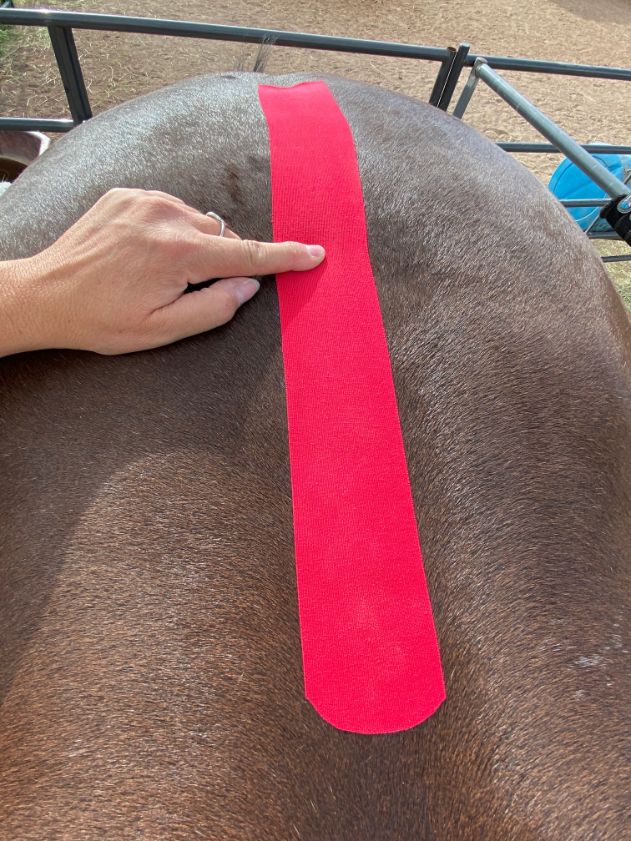
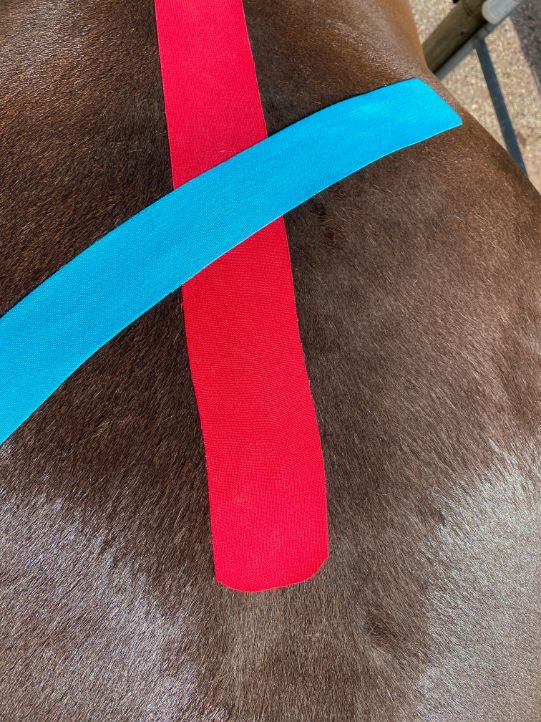
The best modality that I have found to help treat soreness in the Lumbosacral Junction is kinesiology tape. By simply applying a decompression taping over that “V” you can help or totally mitigate that flat feeling. This kind of taping is very effective and easy to apply.
After you have located the soft spot between the vertebrae of the Lumbar and Sacral spines, you will need to measure and cut a strip of extra sticky kinesiology tape about 16 – 18 inches long (it does not need to be exact). You’ll apply the tape along the spine at about 50% stretch (you will need to break the tape’s backing in the middle to be able to stretch the middle section of the tape). I prefer to apply the middle, stretched portion first, and then apply each end with zero stretch. You will want to make sure that the tape covers the “V” in the middle of the tape and has about eight inches on either side of the “V” that is two to four inches wide. I prefer to use Rock Tape H2O (the extra sticky version made for humans), Rock Tape Equine, or Vetkin.
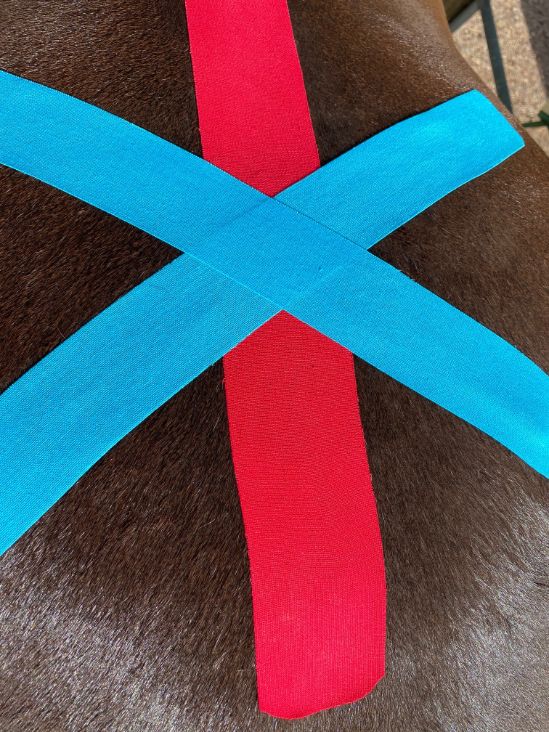
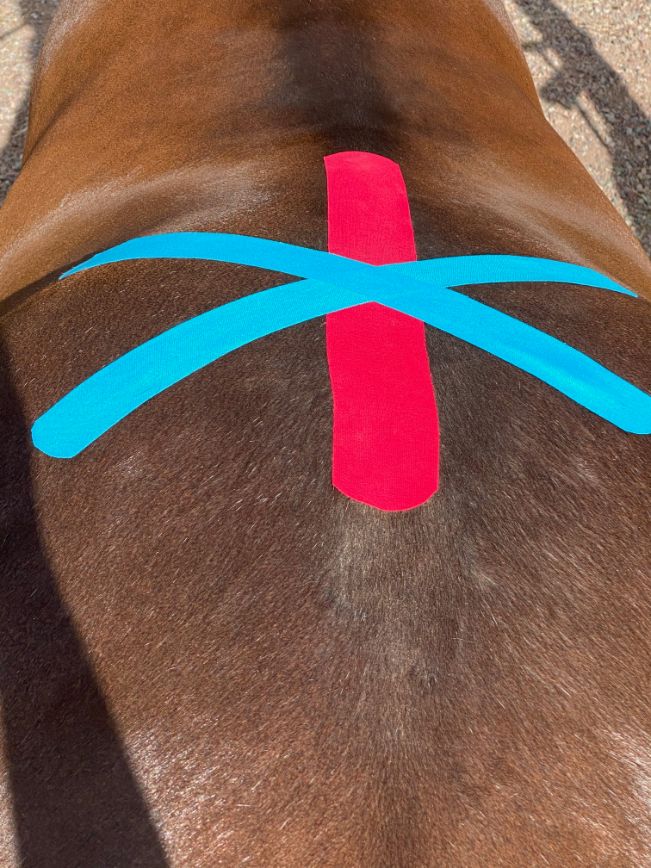
After you have applied the tape along the spine, you will apply two more pieces forming an “X” over the top of the original tape. The “X” should cross directly over the soft “V” spot between the vertebrae. These strips should be applied the same as your first tape: 50% stretch in the middle, apply the middle section first, then apply the ends (approximately two inches on each side of the stretch middle) with zero stretch.
Voila! You’re done! I usually give the horse 12 – 24hrs off after application and I like to leave the tape applied for about 48hrs or so. If possible, longer will not hurt, but it may become irritating and is not necessarily more effective. You can absolutely ride your equine partner with the tape on. You can apply it at a show or event. Most organizations will not let you compete with it on, but you can use it before and after back at the barn.
(I am not a veterinarian and this article does not constitute veterinary advice. Equine bodywork and kinesiology tape are not substitutes for proper veterinary care.)
Carrie Washburn is an equine physiotherapist certified in equine sports massage and equine kinesiology taping and educated in cold laser therapy and Pulsed Electromagnetic Field (PEMF) therapy. As founder of Performance Equine – Integrated Therapies in Carbondale, Colorado, Carrie has worked on some of the country’s top dressage, reining, and show jumping horses. She also competes one of her own horses, Eros, throughout Colorado, Arizona, Utah, New Mexico, Wyoming, California, and Kentucky and has competed at USDF Region 5 Championships and the US Dressage Finals.



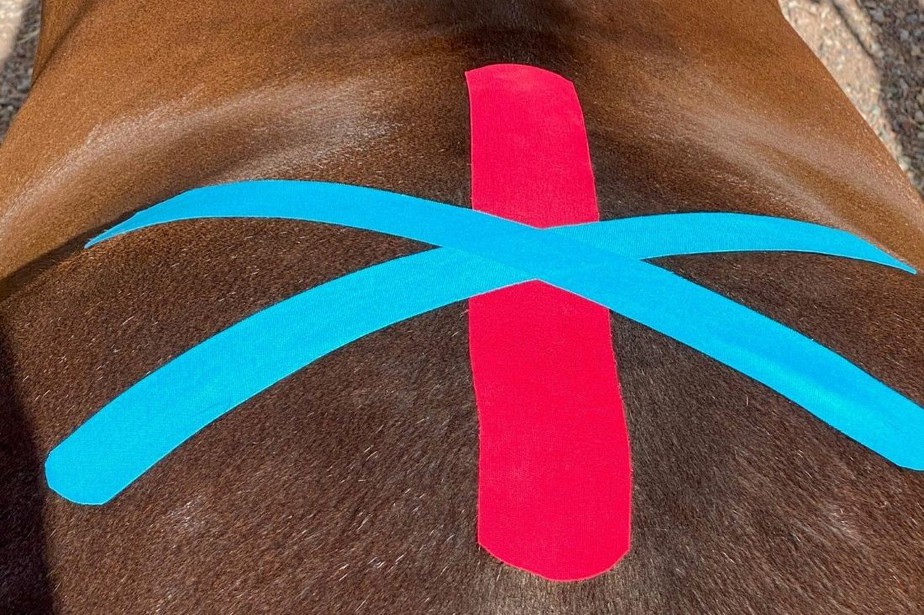

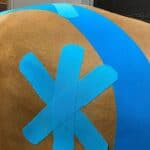
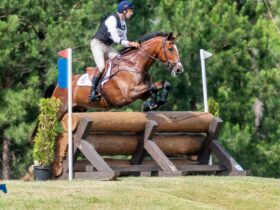

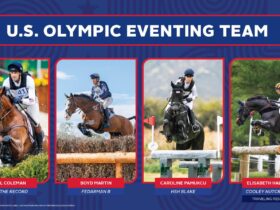
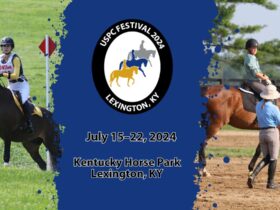

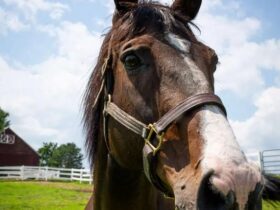
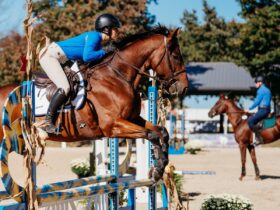


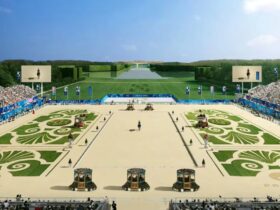
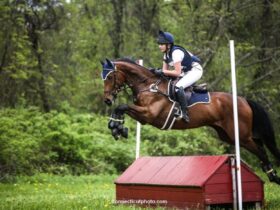


SOCIAL